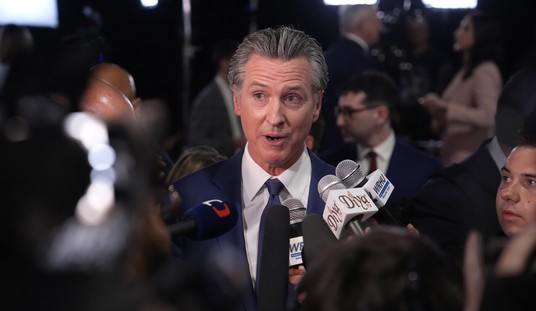It’s not happening.
To avoid the effects of the 2008 financial crisis, the recession, and the slow recovery, John Graham compared the latest estimates from the Centers for Disease Control and Prevention (CDC) with their survey from a decade ago. The result:
"The proportion of people of all ages with a 'usual place to go for medical care' was 87.8 percent last year, the same as it was in 2002-2003. Further, 5.7 percent reported that they failed to obtain needed medical care due to cost last year, the same as it was in 2003-2004."
[A possible explanation (noted by Graham) is that the percent of the population that is uninsured is not much different than it was a decade ago.]
Another study focuses on what happened last year – the first year of access to expanded Medicaid and the health insurance exchanges. New data from 16,000 providers across the country, collected by AthenaHealth, shows that requests for new appointments just barely edged upward in 2014. The proportion of new patient visits to primary care doctors increased from 22.6 percent in 2013 to 22.9 percent in 2014. (See the graph.)

More evidence comes from a study of Massachusetts health reform – the supposed model for national health reform. A new study, published in the BMJ policy journal, examined hospitalization in Massachusetts for 12 medical conditions that wouldn't normally require hospitalization if a patient has good access to primary care. These are thought to be a good measure of access to health care, according to Danny McCormick of Harvard Medical School, the study's lead author.
Recommended
However, the rates of preventable hospitalizations were practically the same in the first few years of the Massachusetts health reform. Further, even though Blacks and Hispanics experienced the largest gains in insurance coverage under the Massachusetts law, they continued to have higher rates of hospitalization for these conditions and the disparity gap didn't narrow in a meaningful way.
As Jason Millman, writing in the Washington Post, observes:
"The landmark 2006 Massachusetts health-care law that inspired the federal overhaul didn't lead to a reduction in unnecessary and costly hospitalizations, and it didn't make the health-care system more fair for minority groups."
Interestingly, 50 years ago many people expected a surge of demand for care in response to the creation of Medicare. It didn’t happen. Sarah Kliff quotes from a 1966 Washington Post article:
"It was a smooth transfusion, undramatic as a bed change. At 12:01 a.m. yesterday, Uncle Sam began paying the bills of close to 1,000 patients over 65 in area hospitals.
The transition to Medicare, the federally financed health plan, was as uneventful as it was historic. The influx of card-carrying Medicare patients was a trickle, not the storm that had been predicted by some."
My own view is that the importance of health insurance has been enormously exaggerated by the health policy community. People without health insurance often find a way to get insurance when a family member develops a serious health problem. Even when they don’t, they often find ways of getting health care.
In addition, the kind of insurance that people are acquiring is not conducive to more doctor visits. Because of the high deductibles in the plans sold in the (Obamacare) exchanges, most people with newly acquired private insurance are paying the full bill out of pocket. It’s as though they were uninsured!
For example, last year the average deductible for a bronze plan on the exchange — the least expensive coverage — was $5,081 for an individual and $10,386 for a family. Silver plans had average deductibles of $2,907 for an individual and $6,078 for a family – about twice the typical deductible for employer plans.
On the other hand, those people who are newly insured through Medicaid, are in a health plan where access to care is notoriously bad. In fact there is some evidence that the uninsured have an easier time making a doctor’s appointment than people on Medicaid.
The last piece of evidence comes from the mental health field. Although an estimated 62 million patients now have better coverage because of the Affordable Care Act, a new report from the National Alliance on Mental Illness concludes that “patients with mental illness are no better off under Obamacare.”
One problem is the high deductibles, discussed above. A second problem is that health plans are keeping premiums down by choosing narrow networks that leave out many mental health providers. Previously, I have called this a “race to the bottom.” A third problem is that the networks themselves are frequently deceptive. Writing in US News, Kimberly Leonard notes that:
"Even if the medical provider is included in a health care network, he or she may not be available. In January 2015, the Mental Health Association of Maryland published a study that revealed only 14 percent of psychiatrists listed in the qualified health plans in the Maryland marketplace were actually accepting new patients and available for an appointment within 45 days – the suggested wait time."
Here is a comment I received from reader Derek Dye:
"In the volunteer work I do at a free clinic in Arlington I’ve recently had the unfortunate task of trying to help evidently mentally ill patients find providers after being forced on the exchanges or Medicaid after losing their insurance, their job, or their access to the clinic, depending on their situation….
[W]hat I found even more troubling were the calls I was placing to providers who aren't even real. I thought I was crazy or just calling the wrong offices as I was getting answering machines at gas stations and restaurants at numbers listed on Carefirst's website as psychiatrists (this happened on multiple calls). In talking to the savvy receptionist she confirmed that this is not uncommon, especially in ACA plans….
[T]he providers I finally got through to were very obviously pill mills in this particular Carefirst plan per Yelp and public records of their prior run ins with the law."
























Join the conversation as a VIP Member